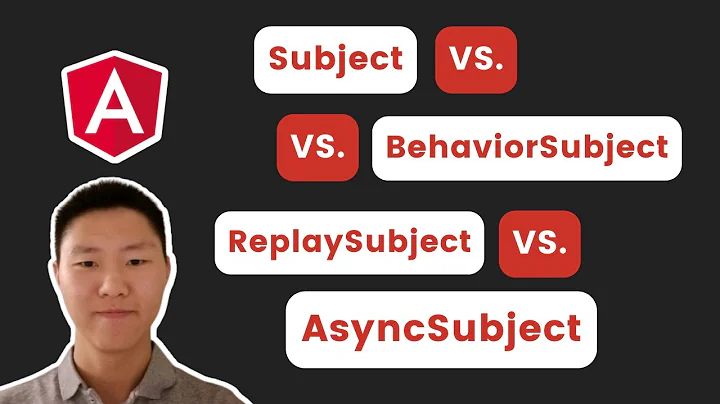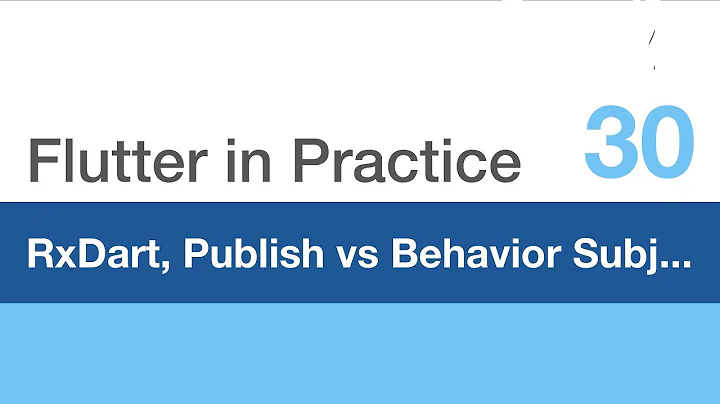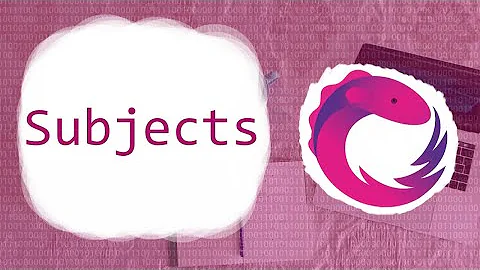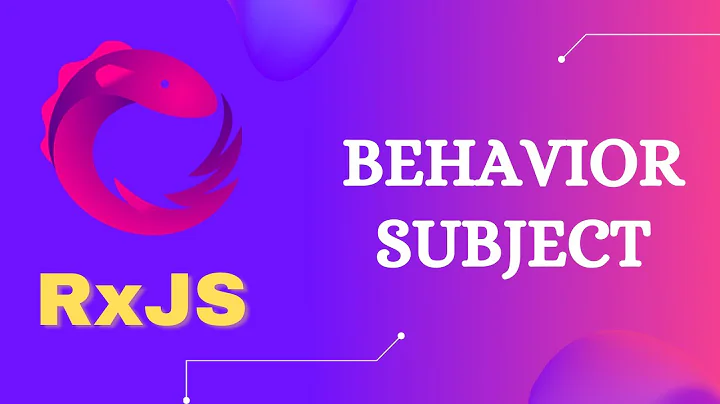BehaviorSubject vs PublishSubject
Solution 1
The main difference between PublishSubject and BehaviorSubject is that the latter one remembers the last emitted item. Because of that BehaviorSubject is really useful when you want to emit states.
Why they make project field a BehaviorSubject and not PublishSubject ?
Probably because they want to be able to retrieve the last emitted project with this method:
@Override public @NonNull Observable<Project> project() {
return this.project;
}
Solution 2
PublishSubject: Starts empty and only emits new elements to subscribers. There is a possibility that one or more items may be lost between the time the Subject is created and the observer subscribes to it because PublishSubject starts emitting elements immediately upon creation.
BehaviorSubject: It needs an initial value and replays it or the latest element to new subscribers. As BehaviorSubject always emits the latest element, you can’t create one without giving a default initial value. BehaviorSubject is helpful for depicting "values over time". For example, an event stream of birthdays is a Subject, but the stream of a person's age would be a BehaviorSubject.
Solution 3
Publish Subject: Here, if a student entered late into the classroom, he just wants to listen from that point of time when he entered the classroom. So, Publish will be the best for this use-case.
Behavior Subject: Here, if a student entered late into the classroom, he wants to listen the most recent things(not from the beginning) being taught by the professor so that he gets the idea of the context. So, here we will use Behavior.
Solution 4
The difference on BehaviourSubject and PublishSubject relies on how long they keep the data they captures, in instance the PublishSubject only keeps the data available at moment and keeps updating on every entry while BehaviourSubject keeps the last data inserted, so you may use for example to confirm password on a signup form and as an example for PublishSubject, performing a search and it has to update the data constantly in order to give accurate results and there's no too much necessity to compare data that are being inserted.
As reference i leave this two photos from http://reactivex.io/documentation/subject.html
Related videos on Youtube
TooCool
Updated on July 09, 2022Comments
-
 TooCool almost 2 years
TooCool almost 2 yearsI'm trying to get my head around the golden rule (if any) about:
When to use BehaviorSubject ?
and
When to use PublishSubject ?
The difference between them is very clear
There are many kinds of subjects. For this specific requirement, a PublishSubject works well because we wish to continue the sequence from where it left off. So assuming events 1,2,3 were emitted in (B), after (A) connects back we only want to see 4, 5, 6. If we used a ReplaySubject we would see [1, 2, 3], 4, 5, 6; or if we used a BehaviorSubject we would see 3, 4, 5, 6 etc. (source : How to think about Subjects in RxJava (Part 1))
I have seen that
Subject's are used in two contexts (at least), UI context and listener context.- UI context (MVVM as example)
For example here a
BehaviorSubjectis used, and it's clear why they useSubjectand notObservablebut I have changed theBehaviorSubjecttoPublishSubjectbut the app behavior still the same.- Listener context
Why they make project field a
BehaviorSubjectand notPublishSubject?-
 TooCool almost 5 yearsA little sample that show the difference between them : github.com/selmanon/BehaviorAndPublishSubjectDemo
TooCool almost 5 yearsA little sample that show the difference between them : github.com/selmanon/BehaviorAndPublishSubjectDemo
-
 Saifur Rahman Mohsin over 4 yearsDoes it only emit state changes or even when state changes to the same previous value? Like for example if I put onNext('Adam'), onNext('Adam'), onNext('Smith') Would it emit only Adam followed by Smith?
Saifur Rahman Mohsin over 4 yearsDoes it only emit state changes or even when state changes to the same previous value? Like for example if I put onNext('Adam'), onNext('Adam'), onNext('Smith') Would it emit only Adam followed by Smith? -
Navneeth about 4 years@SaifurRahmanMohsin See github.com/akarnokd/RxJava2_9/blob/master/src/main/java/io/…. There's no check to see if the current value has changed at all.
-
kjanderson2 over 3 yearsLove this description as an understandable alternative to the classic technical explanation. Thank you!







